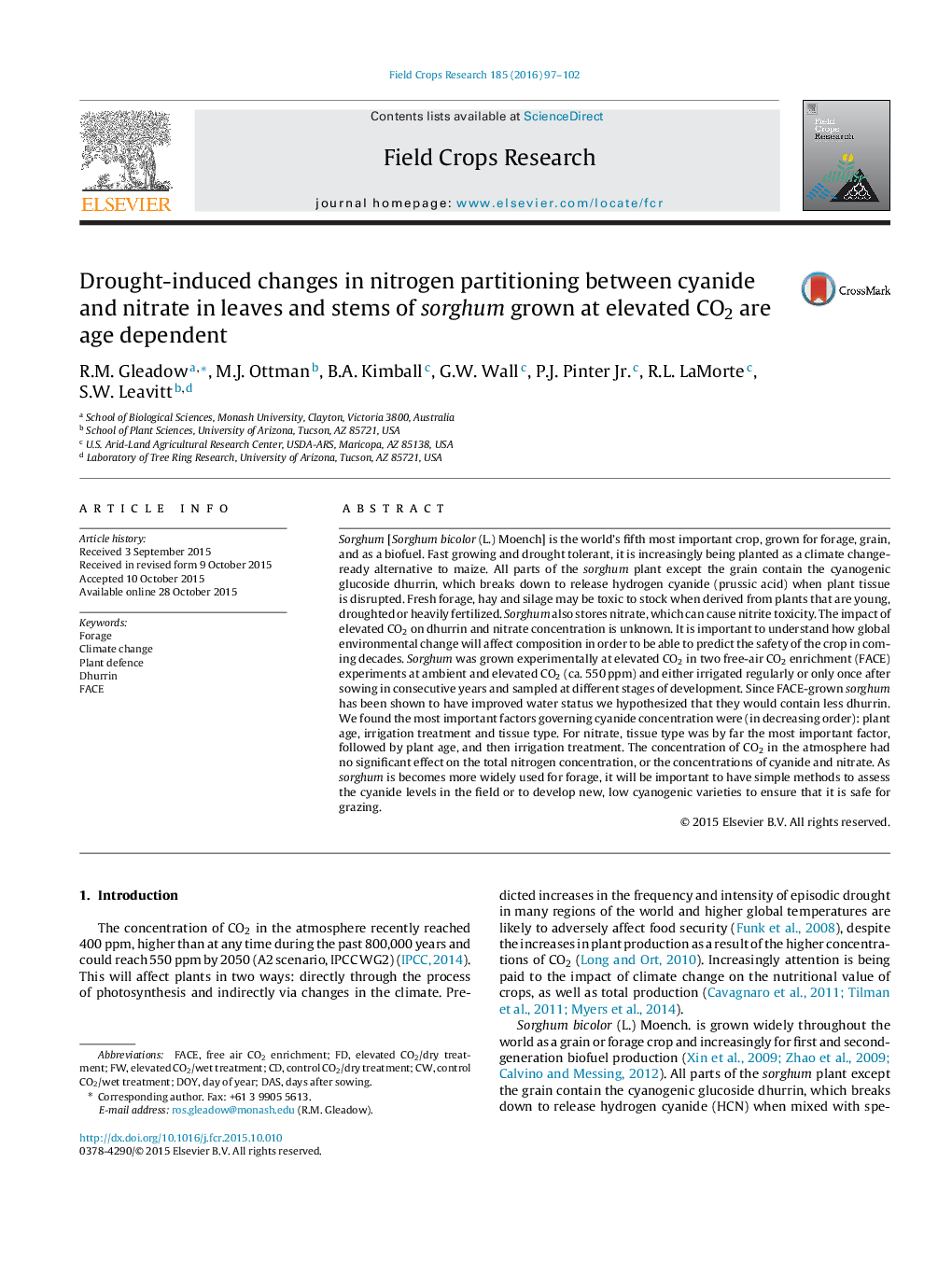| کد مقاله | کد نشریه | سال انتشار | مقاله انگلیسی | نسخه تمام متن |
|---|---|---|---|---|
| 4509896 | 1624678 | 2016 | 6 صفحه PDF | دانلود رایگان |

• Sorghum accumulates dhurrin (cyanide) and nitrate; forage can be toxic.
• Partitioning of N to cyanide and nitrate was measured in FACE studies.
• Cyanide, nitrate accumulation depended on tissue type, plant age and irrigation.
• Drought effected increases in cyanide and nitrate were not moderated at high CO2.
• Risk of toxicity likely to increase with climate change but not directly from rising CO2.
Sorghum [Sorghum bicolor (L.) Moench] is the world’s fifth most important crop, grown for forage, grain, and as a biofuel. Fast growing and drought tolerant, it is increasingly being planted as a climate change-ready alternative to maize. All parts of the sorghum plant except the grain contain the cyanogenic glucoside dhurrin, which breaks down to release hydrogen cyanide (prussic acid) when plant tissue is disrupted. Fresh forage, hay and silage may be toxic to stock when derived from plants that are young, droughted or heavily fertilized. Sorghum also stores nitrate, which can cause nitrite toxicity. The impact of elevated CO2 on dhurrin and nitrate concentration is unknown. It is important to understand how global environmental change will affect composition in order to be able to predict the safety of the crop in coming decades. Sorghum was grown experimentally at elevated CO2 in two free-air CO2 enrichment (FACE) experiments at ambient and elevated CO2 (ca. 550 ppm) and either irrigated regularly or only once after sowing in consecutive years and sampled at different stages of development. Since FACE-grown sorghum has been shown to have improved water status we hypothesized that they would contain less dhurrin. We found the most important factors governing cyanide concentration were (in decreasing order): plant age, irrigation treatment and tissue type. For nitrate, tissue type was by far the most important factor, followed by plant age, and then irrigation treatment. The concentration of CO2 in the atmosphere had no significant effect on the total nitrogen concentration, or the concentrations of cyanide and nitrate. As sorghum is becomes more widely used for forage, it will be important to have simple methods to assess the cyanide levels in the field or to develop new, low cyanogenic varieties to ensure that it is safe for grazing.
Journal: Field Crops Research - Volume 185, January 2016, Pages 97–102